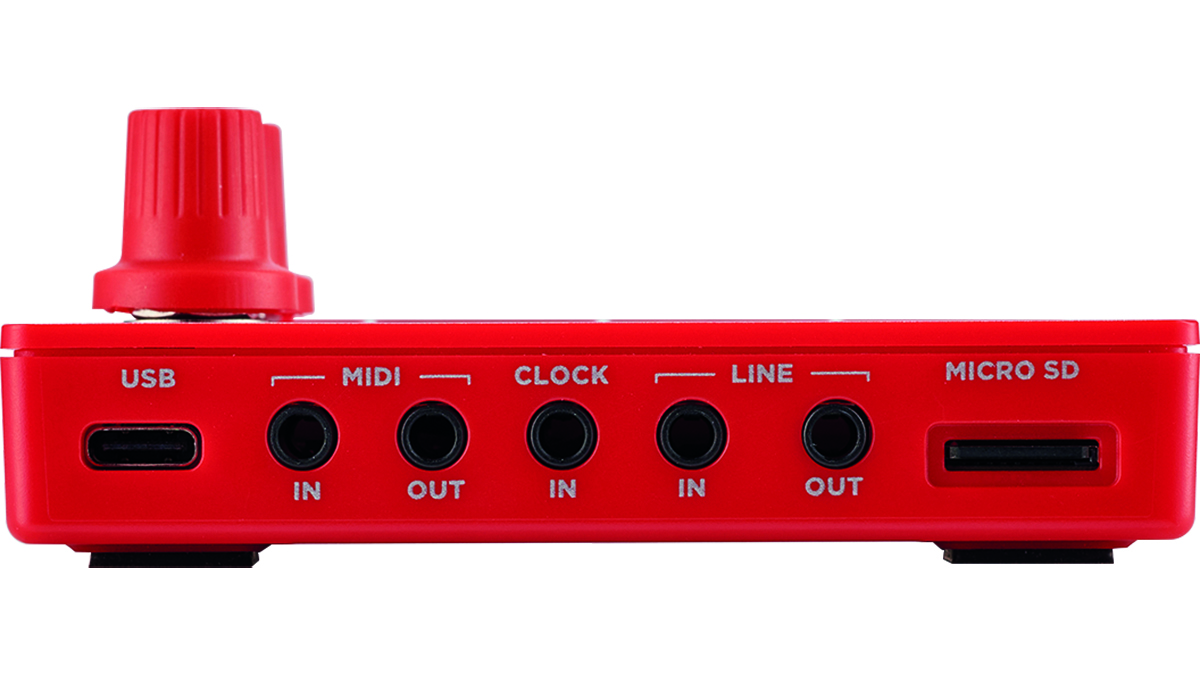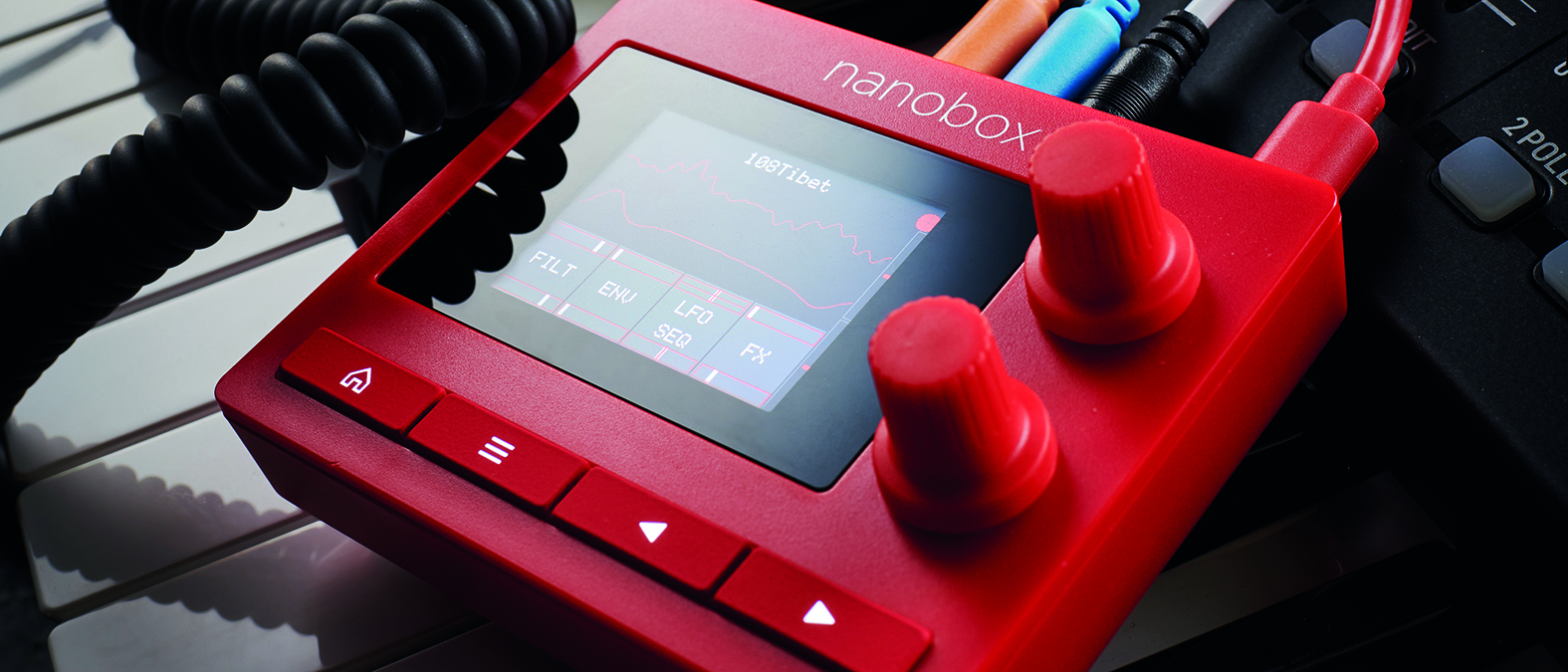MusicRadar Verdict
Fireball delivers ridiculous power and workflow given its size. Shame about the lack of battery and there’s lots of competition at this price.
Pros
- +
Unexpectedly easy to use given the size.
- +
Sounds huge when you get carried away with it – and you will.
- +
Fantastic range of effects and modulation options.
Cons
- -
No battery, which limits portability.
- -
You’ll need an external MIDI controller to get the best playing experience.
- -
Quite pricey.
MusicRadar's got your back
1010 Music Nanobox Fireball: What is it?
1010 is known for its ground-breaking modular and desktop samplers, so it was perhaps inevitable the brand would release some sort of synth, and that it would be quirky and unusual. In fact we have two such devices in the new Nanobox mini desktop range: the red Fireball on test here, and the yellow Lemondrop. Both are smaller than hand-held video games, and both boast a huge amount of power from such a small device.
Fireball is a wavetable synth with a 2-inch touchscreen that controls a pretty powerful sound engine and flexible feature set. With big specs it’s going to stand or fall on its ease of use, but Fireball has a much better workflow than we expected.

1010 Music Nanobox Fireball: Performance and verdict
You start with the Dashboard, four easily selectable zones at the bottom of the screen for filters, envelopes, modulation and effects, plus the two wavetable oscillators in the middle. Each one opens a ‘Stack’ of additional features that you navigate by touch or the two dials, one to move, one to change values. Pressing the Home button takes you back to the Dashboard, on which you’ll also find the preset sound at the top (touch to change).

Using Fireball soon becomes much easier than it has any right to be. A typical example would be to press a wavetable to open up the Oscillator Stack, then the Layers button to step between the three oscillators. Then edit wavetable Type, Pitch, Position and Depth for the first two; edit the wave Type for osc three which adds a wave to your first two to add some weight to the sound.
Using Fireball soon becomes much easier than it has any right to be
You use exactly the same principle to change ADSR values within the Envelope Stack with its two envelopes. Similarly, the Filter Stack has two filters that can be placed in series or parallel and the Effects Stack has two types: Reverb/Delay and Flanger/Chorus/Phaser.
We’ve saved the Modulation Stack until last because it is pretty incredible. You get two LFOs plus a Modulation Sequencer that allows you to ‘draw’ your changes via the touchscreen. Then, any parameters on Fireball that have three boxes next to them can be modulated, each box filled once it has a modulation source assigned. The right arrow lets you select these sources – LFOs, Sequencer, MIDI CC, Envelopes and more – and it’s beautifully easy in operation.
Finally are a couple of other great inclusions: an X-Y performance controller to assign to any parameters and a cool ‘keyboard’ with selectable tuning to play the sounds, with a Hold option that you definitely will use when selecting presets and experimenting. It might make you want to connect a real keyboard via the supplied MIDI cable, though.
Want all the hottest music and gear news, reviews, deals, features and more, direct to your inbox? Sign up here.
And as good as these presets are – lovely drifting pads and strings, big leads and stabs and some nice and clean ‘real’ sounds – experimenting is what you will end up doing. It’s so easy to get in there and muck about that you can quite easily get lost in Fireball for hours.
Fireball’s not cheap and the lack of a battery seems an odd omission given its ‘portability’. But while it is obviously so small, everything else about it is very big, and ridiculously easy to understand. It’s cool too.
MusicRadar verdict: Fireball delivers ridiculous power and workflow given its size. Shame about the lack of battery and there’s lots of competition at this price.
1010 Music Nanobox Fireball: The web says
"Don’t let the compact size of the Fireball fool you; this spicy little synth packs plenty of features and excellent sound."
JunoDaily
1010 Music Nanobox Fireball: Hands-on demos
1010 Music
Sweetwater
sonicstate
1010 Music Nanobox Fireball: Specifications
- KEY FEATURES: Touchscreen wavetable synth with 3 oscillators (2 wavetable each with 103 wavetables, one wave with sine, square, triangle, saw or noise), eight-voice polyphony, 2 filters, 2 LFOs, Modulation Sequencer, 2 banks of effects, real-time X-Y fader, 123 presets.
- DIMENSIONS: 95 x 76 x 38mm.
- WEIGHT: 113g.
- CONTACT: 1010 Music
Andy has been writing about music production and technology for 30 years having started out on Music Technology magazine back in 1992. He has edited the magazines Future Music, Keyboard Review, MusicTech and Computer Music, which he helped launch back in 1998. He owns way too many synthesizers.

